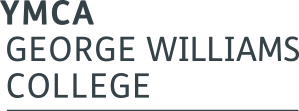Self-reflection and SESD
A useful introduction to the idea of reflective practice, as a way of better understand the relationship between our interventions and developing socio-emotional skills with young people.
Our focus in this section is reflective practice and learning from experience. The articles have been selected to show a range of perspectives, including reflective process, critical reflection, intuition and reflection, reflective cycles and journaling for reflection. Revisiting practice through reflection is what helps us learn and grow as practitioners; as we look to foster SESD in our practice
Theories and ideas
A series of articles and reflective activities designed to link practice with the theories and ideas which inform socio-emotional skills development.
In Chapter One, we are introduced to the idea of reflection, and its purpose and function in education. The kernel of Tarrant’s argument rests on the belief that reflective practice provides an opportunity to consider your own values & beliefs and how they relate to practice in a way that facilitates learning and improvement. Whilst written primarily for teachers, the values and principles of reflective practice translate directly into informal/non-formal education.
Tarrant, P (2017)
Reflection points:
1) What questions might help you reflect on your work with young people?
2) Are you able to identify a connection between your own values and beliefs and the development of socio-emotional learning skills in the young people you are working with?
In this seminal piece by Brookfield, we are introduced to the idea of critical reflection as a way of recognising how the work we do with young people is shaped by our own autobiographies.
Brookfield, S (1998)
Reflection point: which of Brookfield’s lenses do you use to think about your work with young people? How could you use the 4 lenses of critical reflection to better understand your work with young people?
See moreIn this chapter Claxton (ibid) introduces the idea of intuition, as a way of knowing what to do, even without thinking, not to be confused with a warm fuzzy feeling. Working with young people and SESD we may find ourselves in situations where we know what to do but on reflection, we are not sure why.
Claxton, G (2010)
Reflection point: how much of the work you do around SESD is intuitive, and how much is rational? How have you come to know what to do or say when working with young people?
See moreIn this brief article, Gibb’s reflective model is clearly explained along with a helpful example from a trainee teacher. The model is a step-by-step process which takes us through a series of questions designed to facilitate learning from experience. We include Gibb’s in this section as a helpful tool for practitioners, but you might also find it a useful tool for working with young people, as a way of encouraging them to reflect on their SESD experiences.
Reflection Point: think about a time when you were working with a young person, and things weren’t going well. Work through Gibb’s model, you may find it helpful to do this with a colleague. What learning were you able to derive from this process?
See moreIn this final piece, Smith invites us to look at the idea of journaling as an important addition to reflective practice. The relationship between journaling and reflection is clearly explained as an opportunity to capture experiences which can then be revisited, over a period of time.
Smith, Mark (1999, 2006, 2013)
Reflection Point: keep a ‘practice’ journal for two weeks, focusing on your work with young people. After two weeks read through your journal and work through the questions Smith provides at the end of the article (ibid). What new insights have you gained?
See moreFurther reading
A selection of articles, books and websites offering additional resources designed to deepen your appreciation of socio-emotional skills development.
This may seem an odd inclusion in a section on reflection, given Argyris’ focus on organizational learning (ibid). That said his work is of great relevance for learning and development professionals. Encouraging practitioners to think more widely than the problem itself. It is the double loop that invites us to examine the entire context in which the problem is presented, looking beyond what has happened to better understand our approach to SESD.
Argyris, C (1977)
See moreAn extension of the themes found in the previous two articles, Bolton (ibid), introduces the idea of reflexivity as away of finding strategies to ‘question our own attitudes, thought process values, assumptions, prejudices and complex roles in relation to others.
Bolton, G (2009)
See moreHere we find a similar staged model to Gibb’s reflective cycle but with an added focus on the difference between inward and outward perspective.
Janse, B. (2020)
See moreBorton’s model provides a straightforward easy to use guide to reflection, forming the basis of many of the reflective models/processes we have seen elsewhere in this section.
Janse, B. (2022)
See moreIn this reflective piece, Mohammed focuses on the idea of ‘critical incidences’ as events that arise in practice as a way of exploring the underlying issues that provoke strong feelings in an education setting. A useful frame of reference for recognising the way our feelings can affect our practice.
Mohammed, R. (2016)
See moreA useful overview of Kolb’s experiential learning cycle, as tool for reflecting on practice, with an added commentary on learner preferences towards different stages in the learning process.
Smith, M. K. (2001, 2010)
See more